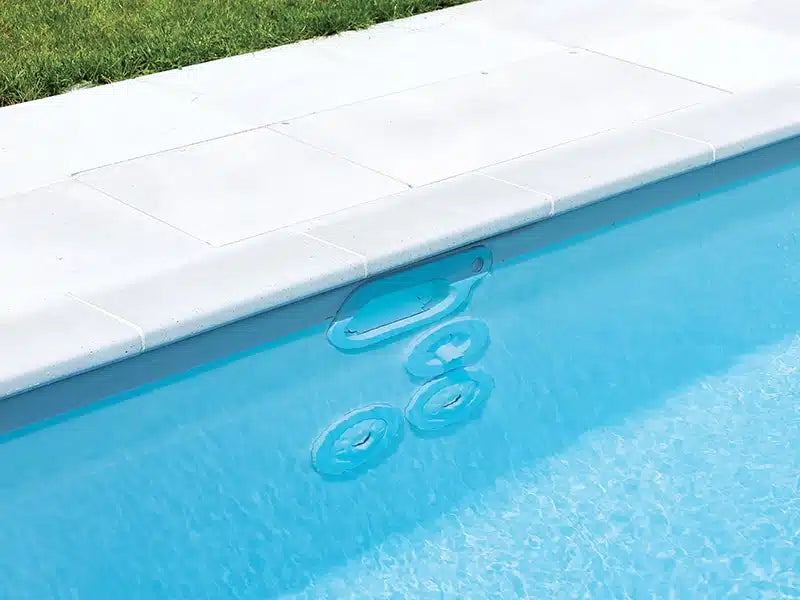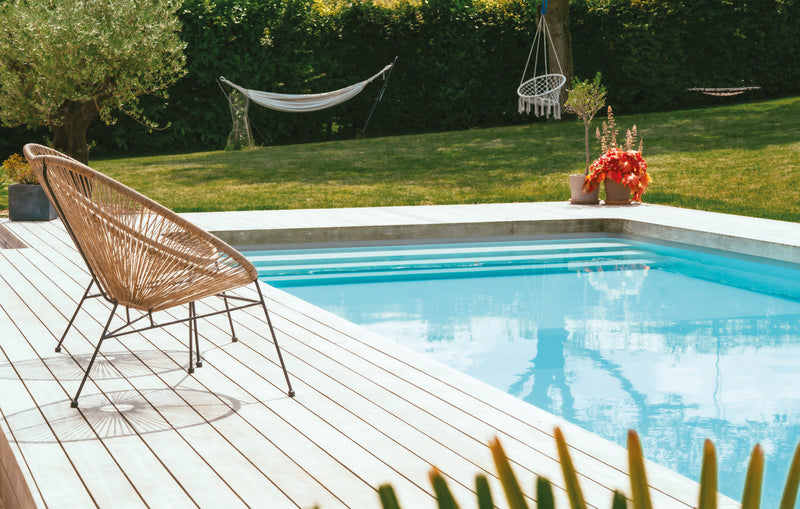- Welcome
- Desjoyaux advice
- fr_FR
-
How does pool filtration work and what is it used for?
How does pool filtration work and what is it used for?
Posté lePool filtration refers to the circulation of pool water and the removal of non-soluble foreign matter from the water.

Why should you filter your swimming pool water?
Filtration is the mechanical action that allows the pool water to circulate, retains suspended particles through the filter and ensures the proper diffusion of the disinfectant.
It is the pool's filtration , combined with chemical treatment, that gives the water its clarity. Stagnant pool water accumulates impurities that float on the surface of the water, then disintegrate and directly affect its quality.
Composition of the filtration system
A swimming pool's filtration system is made up of several elements that work together. These include:
– The skimmer or surface skimmer: it is through the skimmer that the impurities from the pool pass and are then sucked into the filter media
– The filtration pump: it transports the water from the pool to the filter media
– The filter media: this is what collects the particles from the pool. There are different types of filter media: filter bag, sand filter, cartridge, diatomaceous earth filter, etc.
– Return nozzle(s): once filtered, the clean water is returned to the pool through the return nozzle(s)
– Filtration box: allows you to control the pool filtration
– The bottom drain: located at the bottom of the pool, it draws water into the filtration system, allows water circulation, prevents stagnation and facilitates the evacuation of impurities. Pools equipped with traditional filtration with buried pipes are equipped with bottom drains.
How swimming pool filtration works
• Traditional circuit
We speak of a traditional circuit when the swimming pool is physically separated from the elements which make up the filtration and located in a remote technical room (pump, filter media which is most often a sand filter, etc.).
The connection between the swimming pool and the technical room is provided by pipes in which the water circulates
The filter is usually located just after the pump. Water is pushed by the pump through the top of the filter and passes through the sand, which traps impurities, to release clean water that returns to the pool through the return nozzle.
The distance between the filtration elements and the pool can be up to 15 meters. The greater the distance, the greater the risk of pressure losses (reduction in water circulation speed) that must be taken into account by opting for a higher pump power.
• Desjoyaux type filtration group
Installed on the wall or directly integrated into the structure of the pool, the filtration unit includes all the elements necessary for filtering the pool . The water is sucked in by the skimmer and then, once filtered, it is discharged via a discharge nozzle. The filtration unit is made up of 2 separate parts:
– Technical room: this is the part of the unit embedded in the ground which contains the filtration pump.
– Filter room: this is the submerged part of the group which includes the projector and the filtering elements: the skimmer, the pre-filter basket and the filtering media (filter bag or cartridge).
The filter room and technical room are connected by sealed wall crossings which allow the passage of suction and discharge pipes.
The filtration unit has the advantage of being compact and easy to install, eliminating pressure losses and limiting the risk of leaks.
To learn more about the filtration of your Desjoyaux swimming pool
• Other types of filters and their filter media
There are other types of filters commonly used for swimming pools:
– Sand filter: The sand filter uses sand to filter debris and particles from the pool. The water is pumped through two layers of sand of different grain sizes, which trap impurities, and then the filtered water is returned to the pool.
-Diatomaceous Earth Filter: The diatomaceous earth filter uses diatoms (fossilized algae) to filter debris and particles from the pool. Water is pumped through a screen covered with diatoms, which traps impurities, and then the filtered water is returned to the pool.
– Cartridge filter: The cartridge filter uses a polyester cartridge to filter debris and particles from the pool. Water is pumped through the cartridge, which traps impurities, and then the filtered water is returned to the pool. Cartridges must be cleaned or replaced regularly to maintain optimal filtration efficiency.
Please note: Filter backwashing should be done regularly, generally every 1 to 3 months, depending on pool usage and the type of filter media.
• What about the filtration fineness?
The filtration fineness of a swimming pool depends on the type of filter used and its quality. Generally, a sand filter has a filtration fineness of 20 to 40 microns, while a diatomaceous earth filter can have a filtration fineness of up to 5 microns and a cartridge filter can reach a filtration fineness of 10 to 20 microns.
The filter bags are available in 6 microns, 15 microns and 30 microns in order to adapt the filtration fineness to the pool environment, the period of use or its attendance.
It is important to note that even with a high quality filter and good maintenance, some particles may escape filtration.
-
What is the lifespan of a filter media?
The lifespan varies depending on the type of media: approximately 5 years for sand, 3-5 years for zeolite and 10 years for filter glass. The filter bag has a lifespan of 3 years. -
Should the filtration pump be changed if the type of filter media is changed?
No, this is not necessary as long as the pump is compatible with the new media. -
Can we use ecological filter media?
Yes, there are eco-friendly options, such as zeolite or recycled glass. -
How do I know if the filtration pump is working properly?
Check the nozzle outlet pressure indicated on the pressure gauge and observe the cleanliness of the water returned by the discharge nozzles.

